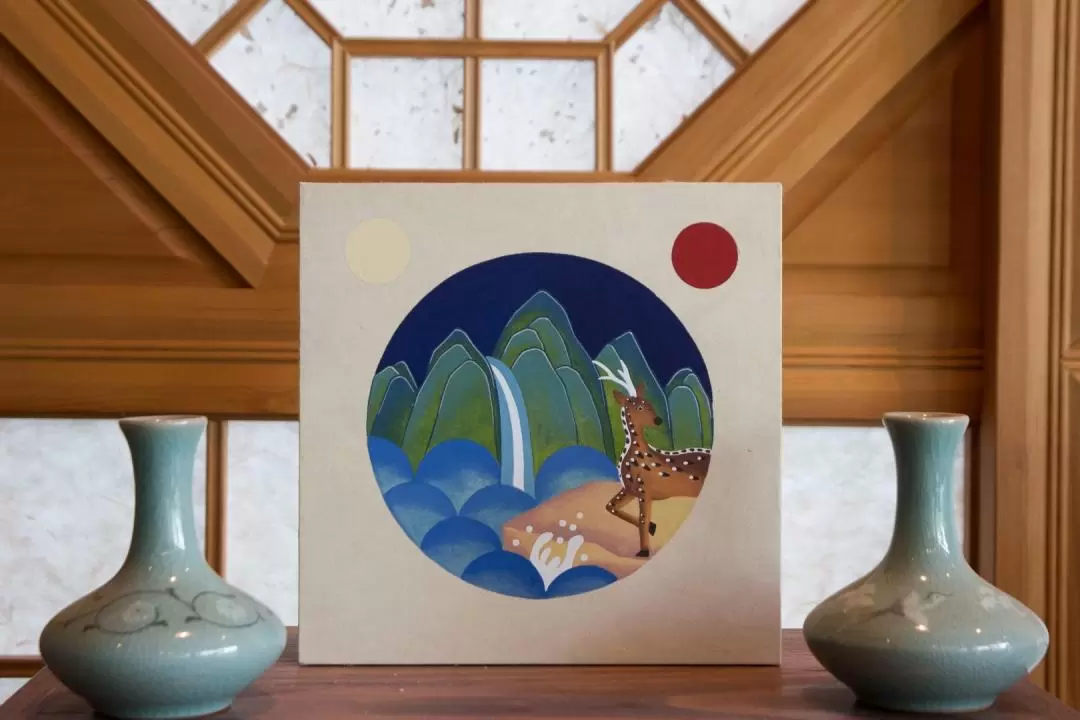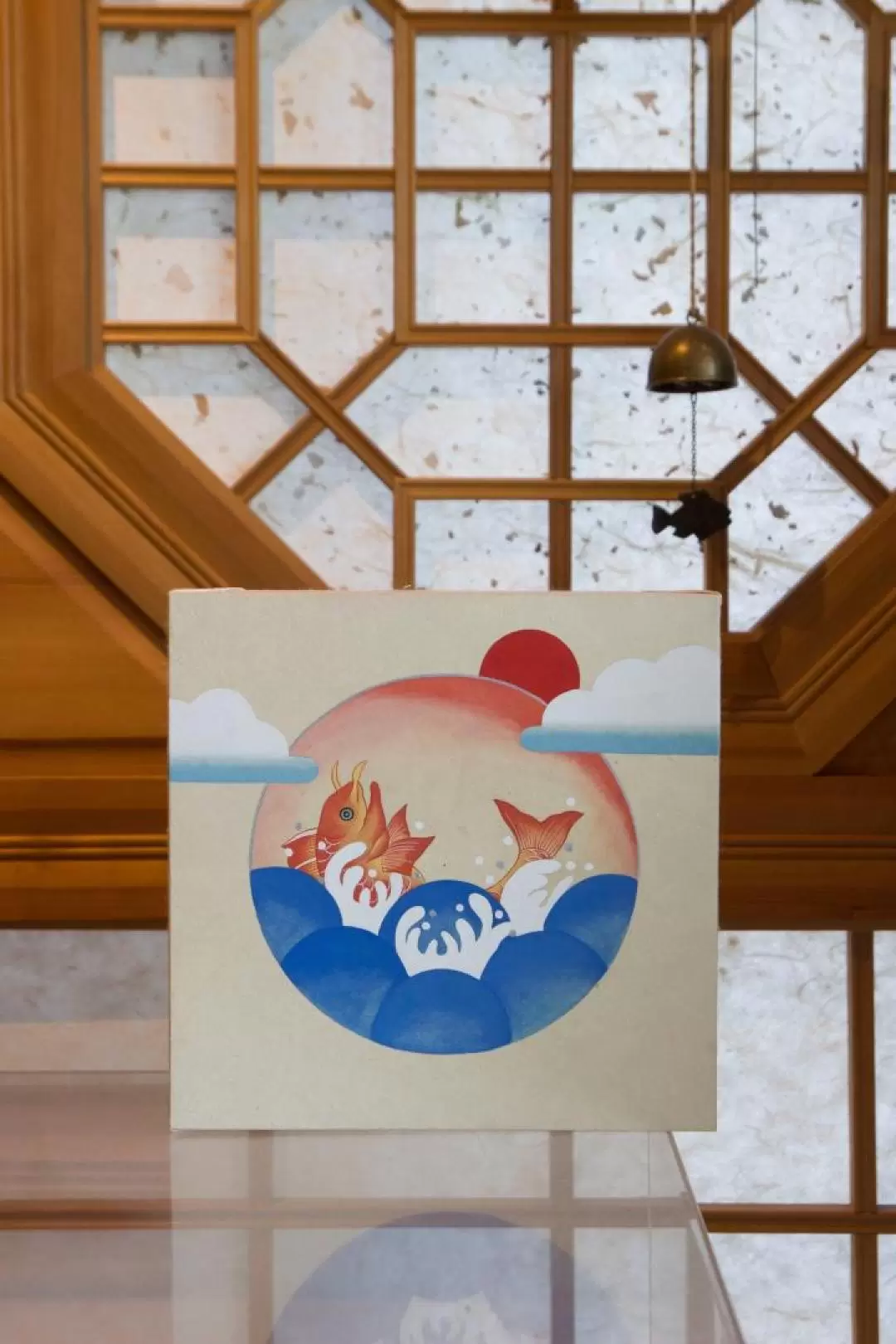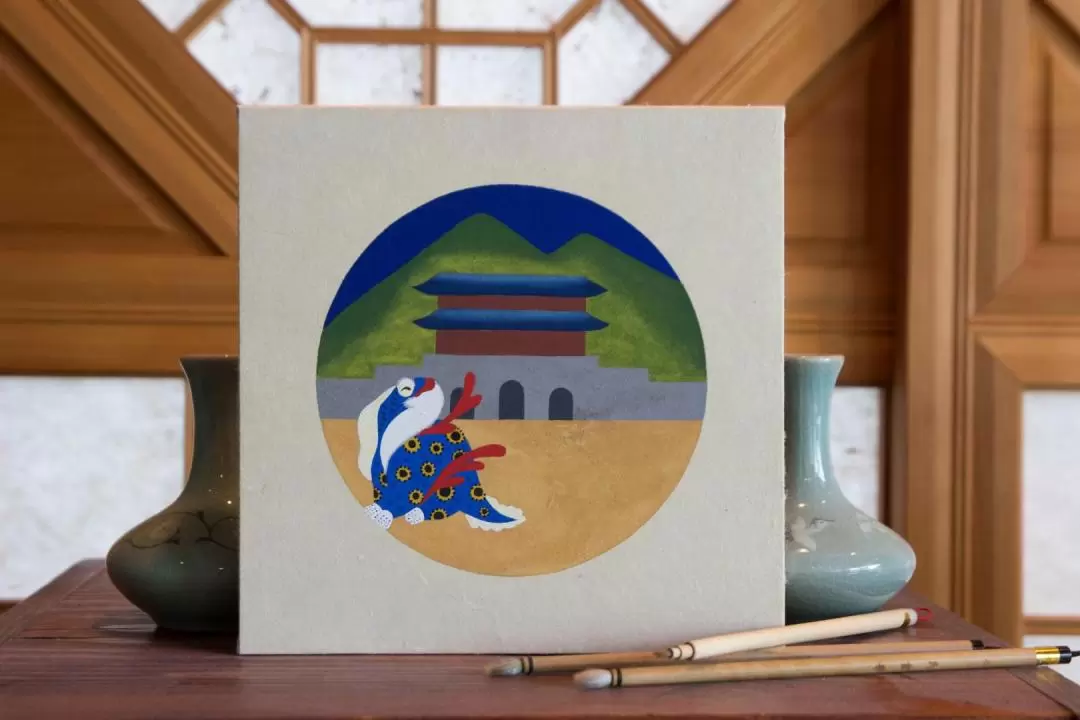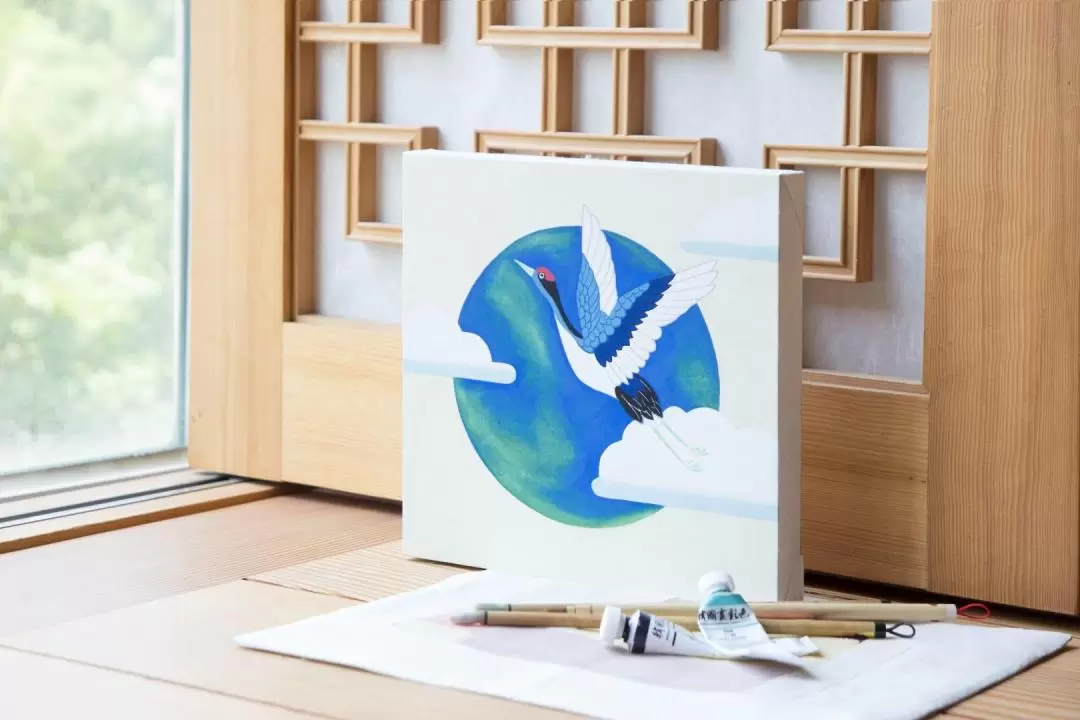"Discover the Beauty of Traditional Korean Animal Paintings: A Must-Do DIY Activity in Seoul"
#Korean painting# animals# wildlife# nature# traditional art# cultural heritage# symbolism# brushwork# ink wash# landscape# birds# tigers# cranes# fish# rabbits# deer# horses# mythical creatures# folklore# traditional motifs# harmony# tranquility# beauty# artistic expression
5(1 ratings)
US$47
Embark on a journey through the captivating world of traditional Korean art, where animals come to life on canvas in exquisite detail and beauty. In the heart of Seoul, South Korea, immerse yourself in the rich cultural heritage of the country through the art of traditional Korean painting.
Known as 민화 (minhwa) in Korean, traditional Korean painting is a reflection of the country's deep-rooted artistic traditions and historical influences. One of the most enchanting aspects of this art form is the depiction of animals, which hold significant symbolism and meaning in Korean culture.
In traditional Korean painting, animals are often portrayed with intricate patterns and vibrant colors, showcasing the artist's skill and attention to detail. From majestic tigers and graceful cranes to playful rabbits and loyal dogs, each animal holds a special place in Korean folklore and mythology.
Participating in a traditional drawing class in Seoul is a unique and enriching activity for travelers looking to explore the beauty of Korean art. Whether you are a seasoned artist or a beginner, joining a DIY painting class allows you to unleash your creativity and learn the techniques of traditional drawing from skilled instructors.
The art of traditional Korean painting goes beyond creating a picture – it is a journey of self-expression and appreciation for the beauty of nature. Through the intricate brushstrokes and delicate lines, you can learn to capture the essence of animals in their natural habitat, bringing them to life on canvas in a traditional and timeless manner.
For those seeking a more modern twist on traditional art, exploring the world of Modern Calligraphy in Seoul is a must. Combining the elegance of traditional calligraphy with contemporary styles and techniques, Modern Calligraphy offers a fresh perspective on the art of celigraphy.
Whether you are drawn to the intricate patterns of traditional Korean painting or the fluid beauty of Modern Calligraphy, a painting and drawing class in Seoul is a wonderful way to immerse yourself in the cultural richness of Korea. Discover the love and passion that goes into each brushstroke as you create your own masterpiece inspired by the traditional art forms of the country.
In conclusion, traditional Korean painting is a mesmerizing art form that captures the beauty and essence of animals in a unique and captivating way. By participating in a traditional drawing class in Seoul, you can experience the rich cultural heritage of Korea and unleash your creativity through the art of traditional drawing. Explore the patterns, beauty, and history of Korean art as you embark on a journey of self-discovery and artistic expression in the heart of Seoul.
Known as 민화 (minhwa) in Korean, traditional Korean painting is a reflection of the country's deep-rooted artistic traditions and historical influences. One of the most enchanting aspects of this art form is the depiction of animals, which hold significant symbolism and meaning in Korean culture.
In traditional Korean painting, animals are often portrayed with intricate patterns and vibrant colors, showcasing the artist's skill and attention to detail. From majestic tigers and graceful cranes to playful rabbits and loyal dogs, each animal holds a special place in Korean folklore and mythology.
Participating in a traditional drawing class in Seoul is a unique and enriching activity for travelers looking to explore the beauty of Korean art. Whether you are a seasoned artist or a beginner, joining a DIY painting class allows you to unleash your creativity and learn the techniques of traditional drawing from skilled instructors.
The art of traditional Korean painting goes beyond creating a picture – it is a journey of self-expression and appreciation for the beauty of nature. Through the intricate brushstrokes and delicate lines, you can learn to capture the essence of animals in their natural habitat, bringing them to life on canvas in a traditional and timeless manner.
For those seeking a more modern twist on traditional art, exploring the world of Modern Calligraphy in Seoul is a must. Combining the elegance of traditional calligraphy with contemporary styles and techniques, Modern Calligraphy offers a fresh perspective on the art of celigraphy.
Whether you are drawn to the intricate patterns of traditional Korean painting or the fluid beauty of Modern Calligraphy, a painting and drawing class in Seoul is a wonderful way to immerse yourself in the cultural richness of Korea. Discover the love and passion that goes into each brushstroke as you create your own masterpiece inspired by the traditional art forms of the country.
In conclusion, traditional Korean painting is a mesmerizing art form that captures the beauty and essence of animals in a unique and captivating way. By participating in a traditional drawing class in Seoul, you can experience the rich cultural heritage of Korea and unleash your creativity through the art of traditional drawing. Explore the patterns, beauty, and history of Korean art as you embark on a journey of self-discovery and artistic expression in the heart of Seoul.
Yeongmo-hwa 영모화(翎毛畵) which means flying and wild animals his greatly contributed to the formation of Korean style and development of painting history.
Korean ancestors depicted not only in flowers and butterflies but also grass bugs, cicadas, dogs, cats, squirrels, hawks and all kinds of fish, and even tigers.
Birds and animals are viewed as companions that inhabit nature together with human beings, and the ecological characteristics and benefits of each other have been linked to life's hopes. They were also portrayed as symbols of good omen to make our lives rich and warm while protecting and helping human life.
As the saying goes “when you draw an animal you must know it’s nature to draw the image
properly.” So if you look at the paintings of Yeongmo-hwa 영모화(翎毛畵) you can sense the detailed observation, inspiration and reflection that Korean ancestors had of nature and life.
Ten Longevity Symbols Painting
Korean culture is known for its auspicious symbolism tradition and Sip-Jang-Saeng is one of the key motifs of the Korean decorative arts. Ship-jangsaeng (十長生 십장생)- Ten Symbols of Longevity is a picture of ten animals and plants that are considered to have good health and long life such as the sun, moon, rock, water, bamboo, pine trees, turtle, crane, deer and herb of eternal youth.
Sipjangsaengdo was commonly given as a gift by the king to his courtier at the beginning of the year. The custom of exchanging them as a “sehwa” was to wish each other happiness and good luck by the upper classes. The longevity symbols were used to decorate walls, but smaller depictions were often offered on New Year’s Day to bring good fortune to the receiver as well as for special occasions like sixteenth birthdays, elderly birthdays, or wedding ceremonies. The desire to live long and not get old was to transcend period and class, so the Sipjangsaengdo were loved by everyone from the upper class to the ordinary people.
This set forms a very important part of the Korean decorative arts tradition, and was used on everything from folk paintings and folding screens to embroidered decorations on fabrics for all kinds of uses in daily aristocratic life. These days it is still frequently used, including on modern metal gateways, doors and the fences around residential or institutional lots.
If you walk down the streets of Seoul you will see remnants of a motif that used to be everywhere especially during the Joseon era. People still incorporate these Ten Longevity Symbols in household protects or as decorations while still representing the same wish our
ancestors had for a long healthy life as well as prosperity.
Deer
You may wonder how deer and cranes, which usually have a lifespan of only about 15-18 years are able to stand alongside the sun, moon and mountains which are symbols of eternity.
The sight of a deer that suddenly disappeared after being spotted was enough to arouse mystery for our ancestors. They viewed the deer as a holy animal due to its beautiful appearance and mild temper. When an image of a deer was painted with pine trees, maples, rocks, or herbs, it usually meant longevity.
The words (白鹿: White deer) and (百祿 : Good Fortune) is pronounced the same, which means to enjoy all kinds of blessings and live a long life. The Chinese character (鹿:Deer) is also the same sound (祿:salary) which means the salary or happiness of a management.
So the deer became an animal that carries both the meaning of longevity and auspicious
meaning.
Crane
Some of our ancestors who followed Taoism, believed that physical and mental training was needed to maintain health and preserve life in order to obtain and enjoy eternal life. Many aspects of different animals like the Crane and Deer have been transformed into a new fantasy
and mystery. In Korea, cranes have an almost divine quality and are said to live for as long as a thousand years. The crane is also deeply integrated in the myths and folklore.
Some believed that those who lived lives of lofty solitude became cranes when they died.
A common phrase stated, "As a red-crested white crane lives thousands of years, a pine tree does 10 thousand of years". So cranes were often painted with pine trees to symbolize longevity. Along with clouds, cranes can be found in many places: architecture, clothing, stationary, and a variety of other.
Haetae
Haechi, generally known as Haetae, often appears in myths as a guardian against fire and disasters. Haetae is sometimes referred to as “the Unicorn-lion” or “an omniscient mythical beast”. Haetae’s body is shaped like a lion that has a horn on its forehead. It has a bell on the neck, and the body is covered with scales. Haitai which had a mission to protect the well-being and peace of the country is actually an imaginary animal, their image was trusted to be able to protect Hanyang (now Seoul) from natural disasters and to give law and order among the people.
During the construction of Gyeongbok Palace, our ancestors predicted that the “fire energy” from Gwanak Mountain across the river would bring disaster to the nation, so the haechi statues were built to cancel out this bad energy. They protect against not only fire, natural disasters but also all disruption or disruptive change. They still stand in front of Gyeongbok
Palace with the same meanings that they’ve held for our ancestors for Koreans today.
Haetae is not only known for protecting historical landmarks in Korea but we can see Haetae
even in households. Some records of this seasonal custom are dragons or tigers painted at
the main gate, haetae on the kitchen door, and paintings of chickens attached at the inner gate of homes on the first month of each year. We can find familiar images of these symbolic animals which like haetae would fend off bad energy such as fire, not only in the royal family
but also in civilian homes.
Carp
For Koreans the phrase Deungyongmun “Passing through the dragon gate” refers to the attainment of success in life, symbolizing entrance and success. In HouHan shu a historical account of the HouHan dynasty, it is recorded that old carp in the early spring when strong
currents reversed the streams direction, competed to leap up a large waterfall named Youngmun, “Dragon Gate”
The object of their desire was yeouiju, a magical stone that bestows omnipotence. As there
are many anecdotes which suggest that carp turned into dragons and ascended. Those fish
that successfully surmounted the falls were transformed into dragons. At the moment of their transformation as they leaped above the tall waves into the morning sun, their tails disappeared in a flash of thunder and lighting.
In relation to humans, the numerous carps gathered beneath the Dragon Gate were born in
a mediocre position, but are considered to be ascended to dragons, if they fight, persevere and challenge the wild torrent. In families wishing for success, they bought a lot of these carp pictures and hung them in their homes.
Such paintings, often given as gifts were hung on the walls of those determined to pass the
civil service examinations. In the past they would have been found in scholar’s homes rather
than in the homes of ordinary Koreans. We choose to create this painting of the carp in order
to symbolize the difficulties in our lives that we will overcome and ascend.



